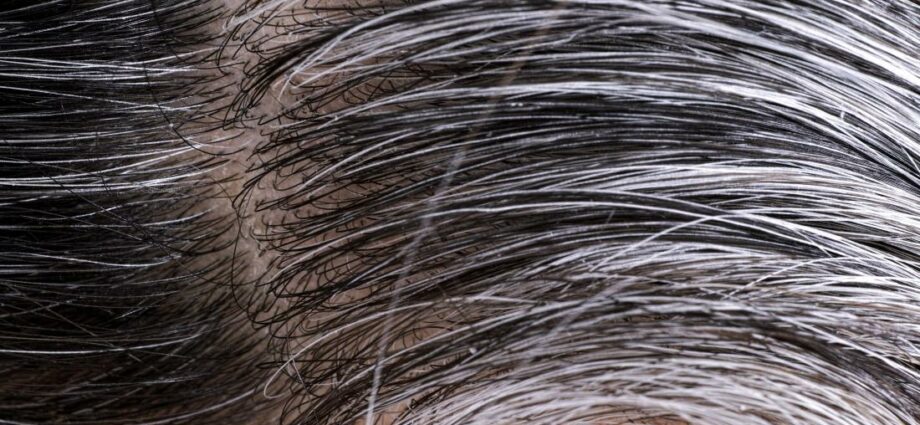Contents
White hair: all you need to know about canities
White or gray hair naturally appears with age, both in men and women. They are above all a cosmetic inconvenience, more than a sign of a severe health problem. However, cosmetics can help cover them up if they are an embarrassment.
Description
White or gray hair is sometimes also called “salt and pepper” when part of the hair turns white in dark people. With age, the other body hairs also whiten and in men, the beard bleached too. We speak of canities to designate this phenomenon of bleaching of hair and body hair with aging.
Hair color depends mainly on the presence or absence of pigments called melanins (the same ones that give the skin its color). They are produced by cells called melanocytes, which are located in the hair bulb at the base of the hair. There are at least two different types of melanins: eumelanins and pheomelanins. The latter are at the origin of blonde to red hues, while the presence of eumelanins gives more brown colors. Both types can be present in the same person and it is the variation in the proportions of these two pigments that explains the great variety of hair color. This proportion of pigments and the resulting hair color is written in our genes, but it can also be influenced by the external environment (the sun, the air, etc.) and therefore vary slightly over time. The hair can thus lighten under the effect of the sun.
The causes
Gray or white hair is not caused by a gray or white pigment, but on the contrary is caused by a lack of melanin pigmentation.
The most common cause of hair bleaching is aging. Like most cells in the body, cells that produce melanin (melanocytes) have a limited lifespan. There is a stock of stem cells (that is to say capable of becoming melanocytes among others) close to the hair follicles which allows them to be replaced, but over time, this stock is depleted and some cells disappear without being replaced. Those that remain also produce less and less melanin. Ultimately, the melanocytes disappear and the hair is no longer pigmented, so it appears white in color.
More rarely, certain genetic diseases can lead to bleaching of the hair. In this case, we speak of leukotrichia. Let us quote for example:
- albinism, a defect in the production of melanin;
- Menkes disease, a copper absorption defect;
- ataxia telangiectasia, a genetic disease that affects DNA repair mechanisms;
- Waardenburg syndrome, a congenital disease that affects hearing, but also pigmentation of the skin and hair;
- a vitamin B12 deficiency.
There is also a popular belief that a strong emotional shock can cause a person’s entire hair to bleach overnight. However, there is no scientific evidence for this phenomenon.
Evolution et complications possible
Hair whitening with age progresses gradually. Usually it affects a few hairs first and then gradually extends to the entire head of hair. Initially the hair may appear rather gray and eventually turn completely white. The same is true for other hairs, such as the beard and eyebrows for example.
Treatment and prevention: what solutions?
There is no treatment or preventive means to stop hair bleaching, but many cosmetic products can be used to dye the hair to hide it.
Some people think that plucking a white or gray hair causes the regrowth of two white hairs. It’s a myth, but it won’t prevent plucked hair from inexorably growing back the same color. The ideal is therefore to dye your hair or better, to get used to your new look!










